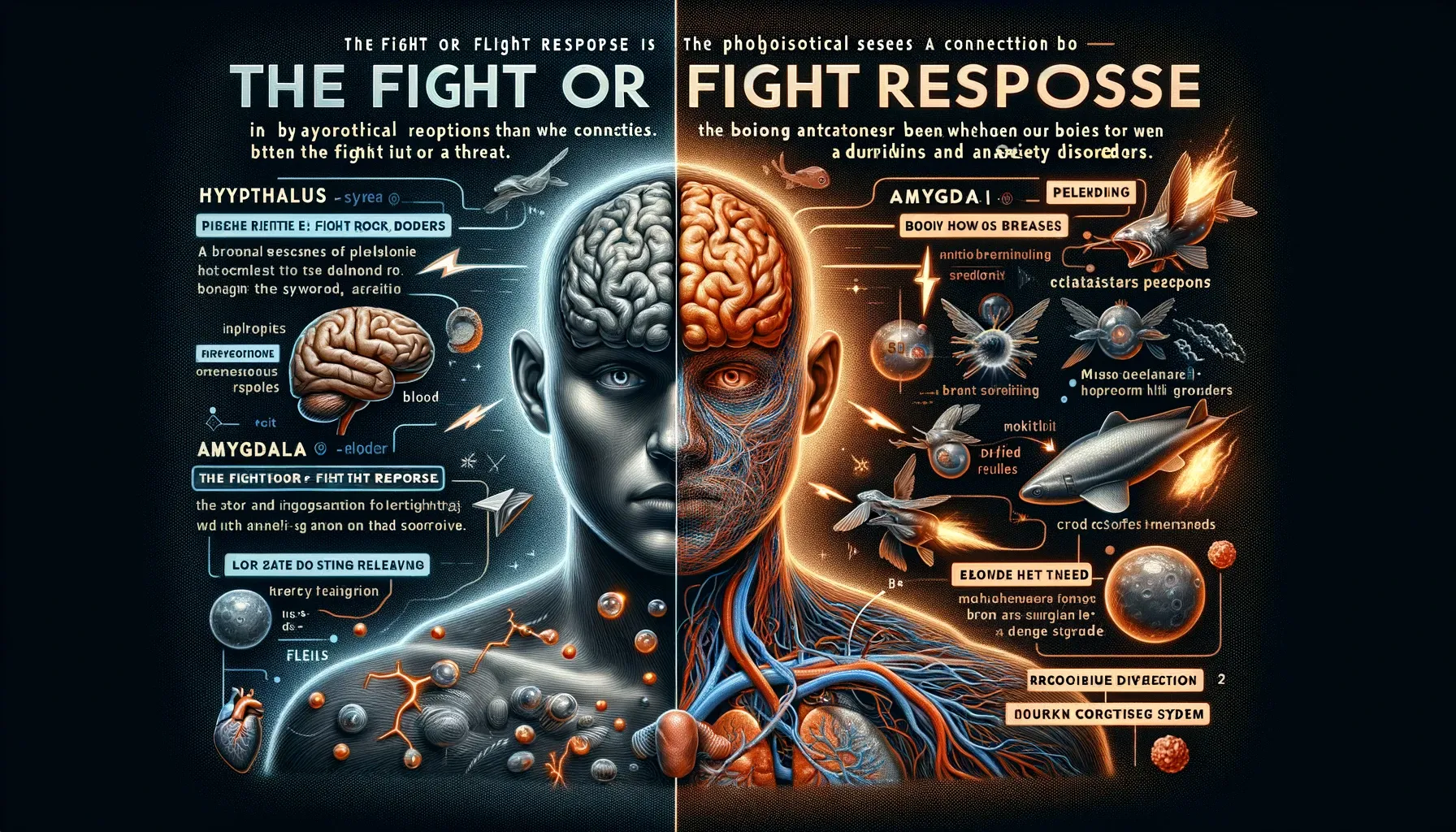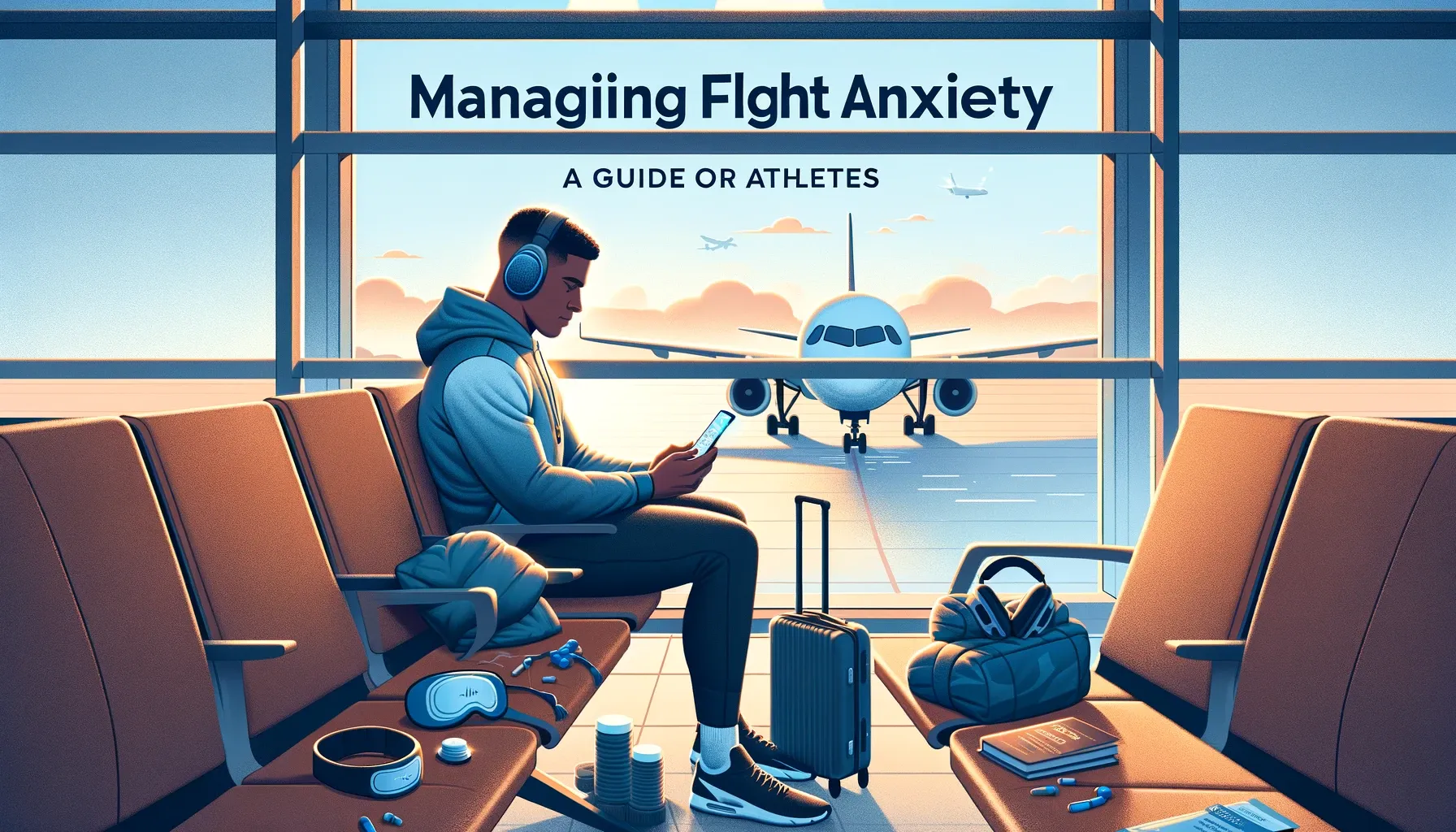Table of Contents
The fight or flight response is a physiological reaction that occurs when we perceive a threat. This automatic response primes our bodies to either stay and fight or flee to safety. Interestingly, research shows that there is a strong connection between the fight or flight response and anxiety disorders. In this article, we’ll explore what the fight or flight response is, how it relates to anxiety and techniques to manage an overactive fight or flight response.
What is the fight or flight response?

The fight or flight response, also known as the acute stress response, refers to a physiological reaction that happens when we sense danger. It is an automatic process controlled by the sympathetic nervous system.
When we perceive a threat, whether it’s real or imagined, the hypothalamus in the brain springs into action. The hypothalamus activates the sympathetic nervous system by signaling the adrenal glands to release stress hormones, like adrenaline and cortisol.
These hormones cause a cascade of physiological changes to prepare the body to stay and fight the threat or run away to safety. Here are some of the key effects of the fight or flight response:
- Increased heart rate and blood pressure to pump more oxygen to big muscles
- Fast, shallow breathing to quickly provide oxygen to the lungs
- Pupils dilate to improve vision
- Sweat production increases to cool the body
- Blood is diverted away from the digestive system toward big muscles
- Increased blood sugar for quick energy
- Suppressed immune system function
These changes are specifically designed to give us an extra burst of strength and speed. This temporarily boosted physical ability would have been useful to our ancestors in life-or-death situations like escaping a predator.
While the acute stress response is an evolutionary advantage when facing genuine threats, it can become problematic if the response is triggered too easily or frequently.
The link between fight or flight and anxiety
There is substantial research indicating a strong link between an overactive fight or flight response and anxiety disorders.
People with anxiety often experience an exaggerated acute stress response in situations where most other people would not perceive danger. Their fight or flight response seems to be triggered easily and more often than needed.
For example, someone with social anxiety may experience intense fight or flight arousal when having a conversation at a social event. Their hearts race, palms sweat, and minds fixate on escape even though there is no real threat present.
The most common anxiety disorders like generalized anxiety disorder (GAD), social anxiety, panic disorder, PTSD, and phobias all seem to involve chronic activation of the sympathetic nervous system and excessive release of stress hormones like adrenaline and cortisol.
Experts theorize that the inappropriate triggering of the fight or flight response and subsequent flood of stress hormones are central to generating and maintaining anxiety.
Research also indicates that people with anxiety disorders tend to have hypersensitive threat detection systems. The amygdala, the part of the brain responsible for detecting threats and activating the acute stress response, appears overly reactive in people with anxiety.
The amygdala springs into action more frequently and sometimes misidentifies innocuous things as threats. This over-sensitivity keeps the fight or flight system constantly ON for people with anxiety.
In summary, research shows a robust connection between anxiety and an overly reactive fight-or-flight response. The acute stress response seems easily triggered, hard to turn off, and hypersensitive in people with anxiety disorders.
Read also: What are Some Techniques and Tools that Athletes Use to Manage Flight Anxiety
How to calm an overactive fight or flight response
Since an overactive fight or flight reaction is so central to anxiety, learning to control this response is essential. Here are some effective techniques to inhibit the acute stress response and calm anxious arousal:
Deep breathing

Deep, diaphragmatic breathing is one of the fastest ways to down-regulate the fight or flight response. Slow deep breaths send signals to the brain to begin calming the body.
Progressive muscle relaxation
Tensing and relaxing major muscle groups helps reduce physiological arousal. It also brings awareness to tension caused by an overactive stress response.
Mindfulness meditation
Research confirms meditation is effective at reducing anxiety. It calms the mind, increases awareness of the present moment, and reduces reactivity. Practicing mindfulness meditation regularly can help manage the exaggerated fight or flight reaction.
Exercise

Engaging in regular vigorous aerobic exercise like jogging, biking, or swimming gives an outlet for the strong physical arousal caused by an overactive acute stress response. Exercise reduces baseline anxiety and reactivity.
Social support
Connecting with others we trust is soothing when feeling anxious. Social support lowers stress hormones and can help inhibit a hypersensitive threat response.
Cognitive restructuring
Reframing anxious thoughts is important because excessive threat perceptions perpetuate a hyper-reactive fight or flight response. Cognitive restructuring helps us reconsider our fearful thinking patterns.
Medication

In some cases, anti-anxiety medication or antidepressants may help reduce an overly sensitive acute stress reaction. Consulting a doctor is recommended to explore if medication could be beneficial.
The good news is that we can learn to control our fight-or-flight reaction using effective techniques like deep breathing and mindfulness. By inhibiting an overactive acute stress response, we can reduce anxious distress and break free from anxiety and fear.
Is there a way to train the brain to not overreact to non-threats?
Yes, cognitive behavioral therapy uses techniques like exposure therapy to gradually train the brain to respond differently to stimuli that trigger excessive fight-or-flight reactions. Over time, the brain learns not to overreact to innocuous stimuli.
In summary, the combat or flight response is a survival mechanism designed to keep us safe from harm. However, studies demonstrate that it’s miles carefully tied to tension issues. Learning competencies to govern an oversensitive combat-or-flight response is essential for handling continual tension. With practice, we can reply to life’s demanding situations with extra poise and much less worried reactivity.
Key points on fight or flight and anxiety
- The fight or flight response is an automatic physiological reaction to perceived threats controlled by the sympathetic nervous system.
- Research confirms there is a strong link between an overly reactive fight or flight response and anxiety disorders.
- The acute stress response seems easily triggered and difficult to turn off in people with anxiety.
- Learning skills to calm the fight or flight reaction, like deep breathing and meditation, is important to manage anxiety.
- Controlling excessive threat perceptions through cognitive restructuring is also key, as thoughts impact the acute stress response.
- With practice using techniques to inhibit fight or flight, we can reduce anxiety and fear.
People also ask
What exactly happens in the brain during a fight or flight?
When faced with a threat, the hypothalamus signals the adrenal glands to release adrenaline and cortisol. The amygdala and hippocampus work together to identify danger and trigger fight or flight. Executive functions like reasoning shut down while areas involved in reaction, reflexes, and movement activate.
Is fight or flight the same thing as an anxiety or panic attack?
Anxiety and panic assaults contain an exaggerated combat or flight response, however they are no longer the same issue. Fight or flight refers in particular to the intense pressure reaction itself – the cascade of physiological adjustments. Anxiety/panic assaults are episodes of severe worry due to an overactive fight or flight response.
Can medication help control an overactive fight or flight response?
Yes, medicines like selective serotonin reuptake inhibitors (SSRIs) and serotonin-norepinephrine reuptake inhibitors (SNRIs) may additionally help modify an oversensitive or without difficulty prompted fight or flight response. Consultation with a doctor is recommended to explore if medicine may be useful.
Does exercise help reduce the fight or flight response?
Yes, research shows everyday workout helps lower baseline anxiety tiers by burning off extra pressure hormones like adrenaline and cortisol that are launched during combat or flight. Exercise also fatigues the muscle groups making combat or flight extra tough.




